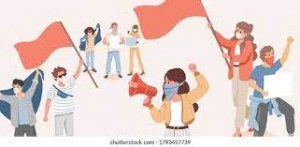 Source: Journal of Sociology, Bulletin of Yerevan University, Vol. 13 (1), Jun 2022, Pp. 55-65
Source: Journal of Sociology, Bulletin of Yerevan University, Vol. 13 (1), Jun 2022, Pp. 55-65
Gayane Harutyunyan
The socio-economic and political processes typical for the second half of the 19th century, as well as structural changes in Western societies stimulated the formation of the scientists’ interest toward social movement research. The latter stemmed from a practical need to understand how social change takes place. Researchers’ interest in social movements has grown in recent decades (Rucht, Neidhartd, 2002։ 8).The democratization of societies and the liberalization of political regimes have created solid ground for the emergence of new social movements, which have not only become widespread, but also, over time, in parallel with the technological development of societies, have acquired new features. (more…)
 Hakob Matevosyan
Hakob Matevosyan Gayane Harutyunyan
Gayane Harutyunyan